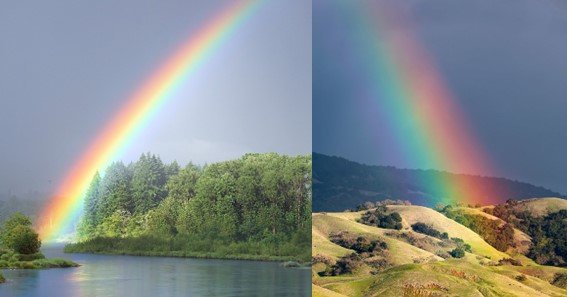Rainbows are a common sight during spring and summer, but have you ever noticed that they’re almost nonexistent in winter? The reason lies in the very nature of how rainbows form and the specific conditions that are prevalent in different seasons.
The Science Behind Winter Rainbows
Rainbows form when sunlight interacts with water droplets in the atmosphere. For a rainbow to appear, several conditions must be met: there must be sunlight, and there must be water droplets in the air (usually from rain). These water droplets act as tiny prisms, bending and reflecting sunlight to create the spectrum of colors we see in a rainbow.
During winter, however, the conditions needed to create a rainbow are less common:
- Low Sunlight: In winter, the sun is lower in the sky, and the daylight hours are shorter. The angle at which sunlight hits the earth is crucial for rainbow formation, and during winter, the sun’s lower angle reduces the likelihood of a rainbow forming.
- Precipitation Type: Instead of rain, winter typically brings snow, sleet, or ice. Unlike raindrops, snowflakes and ice crystals scatter light differently, leading to optical phenomena like sundogs or halos rather than rainbows. These ice crystals refract light differently, making it nearly impossible for a rainbow to form.
- Lack of Liquid Water Droplets: Since winter precipitation is often frozen, there are fewer liquid water droplets in the air to refract sunlight. Without these droplets, the colorful arcs of a rainbow can’t form.

FAQ
Can a rainbow form in winter?
It’s rare but possible under specific conditions when rain, not snow, falls, and the sun is low in the sky.
What optical phenomena occur in winter instead of rainbows?
Common winter optical phenomena include sundogs, halos, and fogbows, all caused by ice crystals rather than raindrops.
Why does snow prevent rainbow formation?
Snowflakes and ice crystals scatter light differently than raindrops, preventing the refraction and reflection needed to create a rainbow.
What is a sundog?
A sundog is a bright spot on either side of the sun, caused by the refraction of sunlight through ice crystals in the atmosphere.
Are winter rainbows ever visible?
They can be, but they’re extremely rare and usually occur during brief winter rain showers rather than snow.










